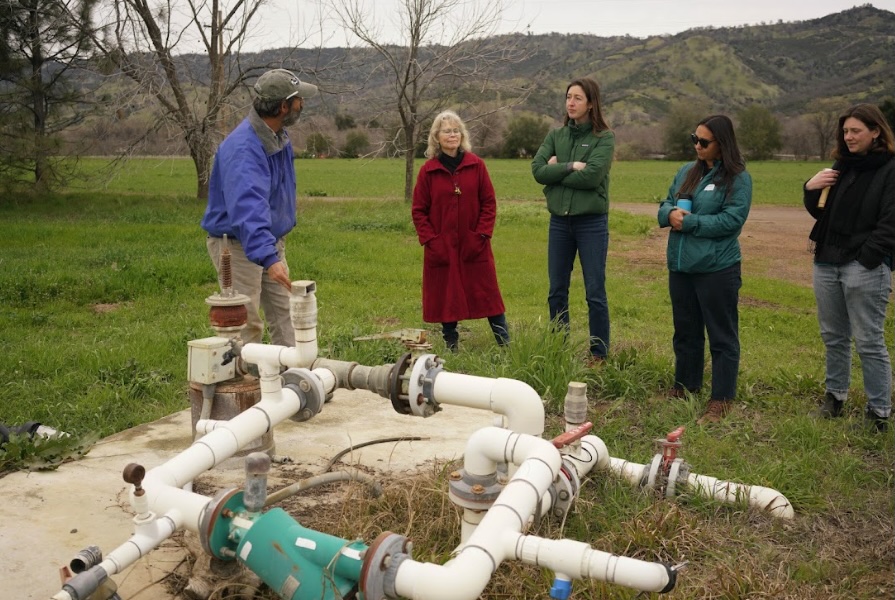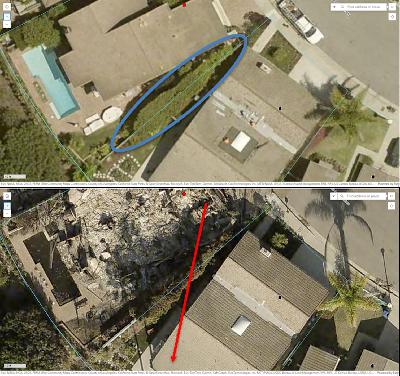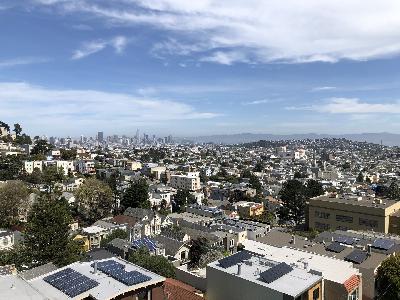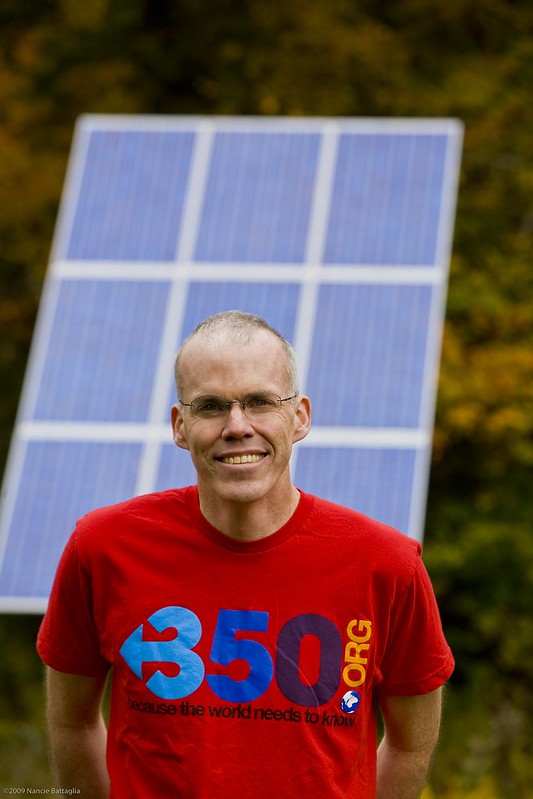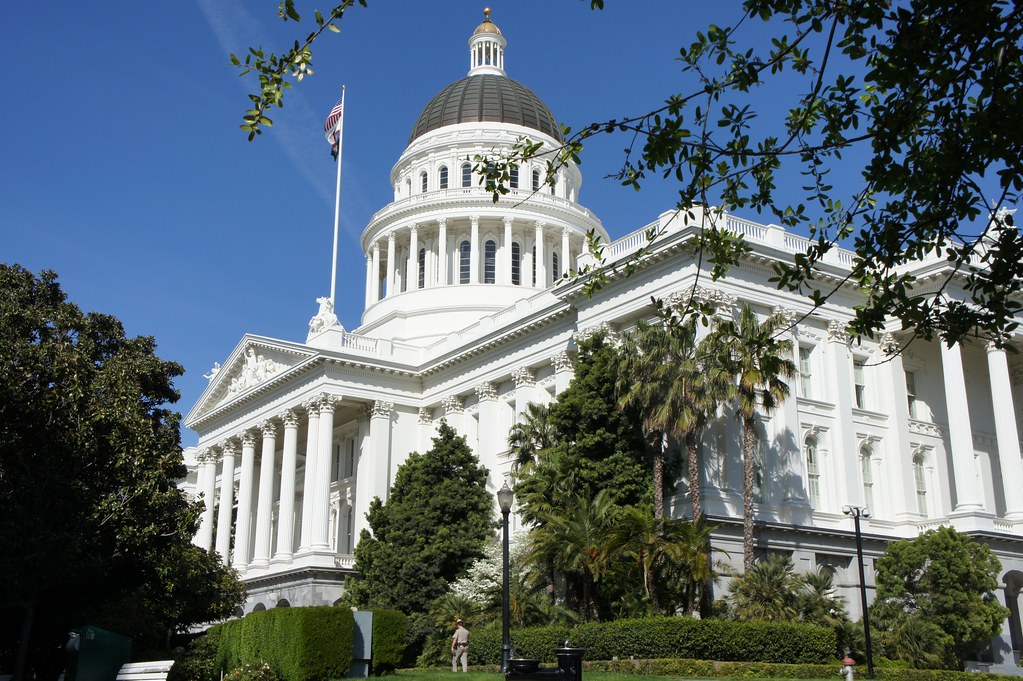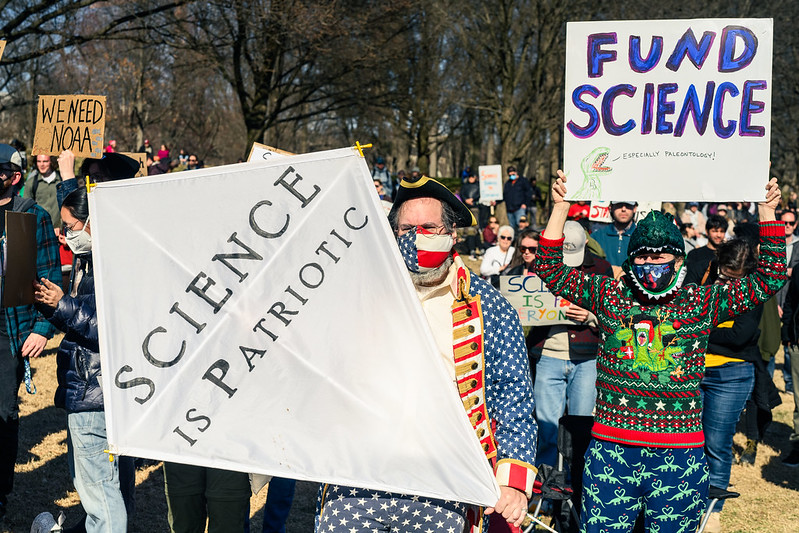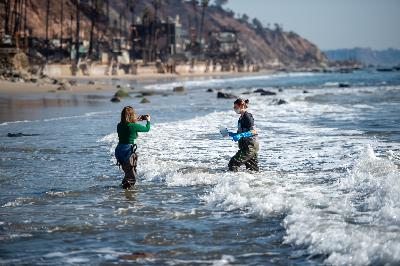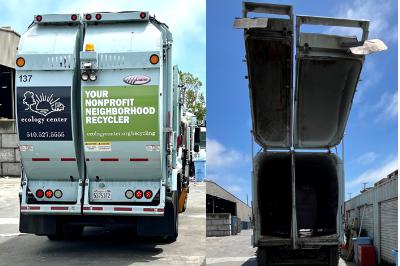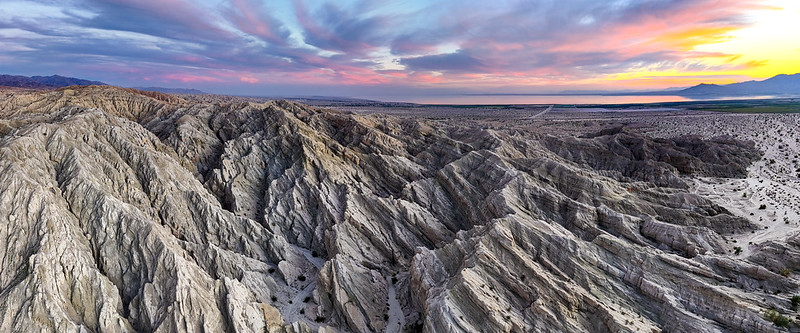Discover KPFA - Terra Verde
KPFA - Terra Verde

KPFA - Terra Verde
Author: KPFA.org - KPFA 94.1 Berkeley, CA
Subscribed: 27Played: 292Subscribe
Share
© 2025KPFA 312700
Description
Terra Verde delivers news and views about the most critical environmental issues across California and globally. From agriculture and wildlife to energy and climate change, industrial pollution to design solutions, Terra Verde brings you stories of struggle and triumph that will determine the future of our planet.
975 Episodes
Reverse
It is widely recognized that climate change is the biggest global health threat that we face today. But one piece of information that gets relatively little attention is the question of: how does climate change affect our brains? Dr. Burcin Ikiz is a neuroscientist and global health advisor who studies exactly that. On this episode, she joins Terra Verde host Fiona McLeod to discuss how climate change and environmental factors like air pollution, extreme heat, and malnutrition affect neurological and mental health.
Burcin Ikiz, PhD is the founder of EcoNeuro and the International Neuro Climate Working Group. She leads a network of over 250 researchers, physicians, and policymakers with the goal of expanding research on how climate change impacts neurological and mental health, and on translating these insights into tangible global health solutions. She is an Adjunct Lecturer in the Department of Psychiatry and an Affiliate of the Center for Human and Planetary Health at Stanford University, where she contributes to transdisciplinary efforts linking neuroscience, mental well-being, and climate resilience to advance brain and planetary health. In 2025, Dr. Ikiz was named a Grist 50 Fixer alongside other climate and justice leaders building sustainable and hopeful futures.
The post How Does Climate Change Affect Our Brains? appeared first on KPFA.
California’s 2014 Sustainable Groundwater Management Act (SGMA) was designed to stabilize the state’s groundwater resources, but its implementation has posed significant challenges, particularly for small-scale farmers. Many of these producers across the state face barriers to accessing technical support and taking part in decision-making processes under SGMA. While large agricultural operations can invest in efficient irrigation systems or purchase extra water, small-scale farmers stand to be hit the hardest by water caps and overuse fees.
On this episode of Terra Verde, host and producer Hannah Wilton is joined by Catherine Van Dyke, Deputy Director of Water Policy at the Community Alliance with Family Farmers (CAFF), and Ngodoo Atume, SGMA Small Farms Technical Assistance Coordinator with the University of California Agriculture and Natural Resources Small Farms Network. They discuss how SGMA is playing out on the ground and share their insights on how policy actors can work together to ensure the state’s most vulnerable farmers aren’t left behind.
The post Managing Groundwater: From Policy to Practice appeared first on KPFA.
A weekly public affairs show that delivers news and views about the most important environmental issues in California and globally.
The post Terra Verde – October 10, 2025 appeared first on KPFA.
A weekly public affairs show that delivers news and views about the most important environmental issues in California and globally.
The post Terra Verde – October 3, 2025 appeared first on KPFA.
A weekly public affairs show that delivers news and views about the most important environmental issues in California and globally.
The post Terra Verde – September 26, 2025 appeared first on KPFA.
Photos before and after the 2025 Palisades Fire show thick green vegetation between two closely spaced homes. The arrow shows the direction of the fire’s spread. Photo courtesy of Max Moritz; CAL FIRE Damage Inspection photos / The Conversation.
The City of Berkeley has passed strict regulations that will require residents in certain parts of the city’s hills to keep five feet around their homes, dubbed “Zone Zero,” free of flammable materials. That includes wooden fences and trellises that are attached directly to homes, trash bins, and most controversially, almost all vegetation. The State of California too, is drafting Zone Zero rules that include limiting vegetation directly next to buildings in high risk areas. In this episode of Terra Verde, Earth Island Journal editor-in-chief and cohost Maureen Nandini Mitra talks with two scientists who study how vegetation ignites and burns — Max Moritz, head of the Mortiz Fire Lab in UC Santa Barbara and a wildfire specialist at the University of California Cooperative Extension, and Luca Carmignani, assistant professor of engineering at San Diego State University and a former fire advisor for the Wildland-Urban Interface in Southern California. Moritz and Carmignani say what appears to matter more for keeping plants from becoming fuel for fires is how well they’re maintained, and that the debate around plants is distracting from the essential and urgent work of implementing other home hardening measures.
Read an article they co-wrote citing their concerns in The Conversation.
The post Zone Zero: Can Removing Vegetation Within 5 Feet of Homes Really Reduce Wildfire Risk? appeared first on KPFA.
Photo by Bango Architecture and Design.
In recent years, the movement to decarbonize the buildings where we live, work, and otherwise spend our time has picked up speed. It’s no wonder. The climate crisis is escalating, and building operations account for a significant portion of our greenhouse gas emissions here in the United States, somewhere around 30 percent. Reducing these emissions could go a long way towards mitigating global climate change. It could also come with significant benefits for our health.
Alongside the push to decarbonize is a growing movement to ensure that it is done equitably. Community advocates are drawing attention to the fact that, if not handled thoughtfully, the transition could leave lower-income residents behind. In an effort to prevent this, they are piloting projects to bring the benefits of decarbonization to underserved communities.
In this episode of Terra Verde, Earth Island Journal managing editor and show cohost Zoe Loftus-Farren talks about equitable decarbonization in California’s San Francisco Bay Area with Edith Pastrano, lead organizer for the Contra Costa office of ACCE Action, and Chris Selig, director of the Health Resilient Homes initiative at PODER.
The post Centering Equity in Home Decarbonization appeared first on KPFA.
A weekly public affairs show that delivers news and views about the most important environmental issues in California and globally.
The post Terra Verde – September 5, 2025 appeared first on KPFA.
A weekly public affairs show that delivers news and views about the most important environmental issues in California and globally.
The post Terra Verde – August 29, 2025 appeared first on KPFA.
Our best hope for a new civilization is one that points a mirror to the sun to fuel our world, says climate activist Bill McKibben. Photo by Nancie Battaglia / 350.org.
In his latest book, Here Comes the Sun: A Last Chance for the Climate and a Fresh Chance for Civilization, veteran climate activist and author Bill McKibben makes a deeply-researched and passionate argument that the path out of our planetary crisis s lit by the sun. Additionally, he says, a massive, and rapid, pivot to solar power will come with some key co-benefits, including a chance to build a healthier and more just world. On this episode of Terra Verde, Earth Island Journal editor-in-chief and show cohost Maureen Nandini Mitra talks with McKibben about his new book, the opportunities for and roadblocks to the energy revolution that’s underway, and why he believes that “if you don’t put up a field of solar panels now the world will break.”
Note: Check out McKibben’s call for Sun Day celebrations on September 21 at sunday.earth.
The post To Avert Climate Chaos, Turn to the Sun appeared first on KPFA.
Scrap SF, pictured, diverts about 1,000 pounds of material a day from the waste stream. Photo by Benjamin Pender.
Here in the United States, most of us have a lot of stuff. We have things that we use everyday, and keep using for years, and others that we use a few times and then outgrow. We have books and magazines we’ve read but don’t want to discard, and junk drawers filled with trinkets that we don’t want to throw out, but aren’t quite sure what to do with.
What we do with all this stuff can have real implications for the environment. As the guests on this episode of Terra Verde can speak to, it can also make a difference when it comes to community building, arts, education, and more. Terra Verde co-host Zoe Loftus-Farren digs into the reuse economy with Lela Means, co-founder of Strange Exchange SF, which aims to extend the life of small household items, and Danielle Grant, programs director at Scrap SF, a nonprofit working at the intersection of art, the environment, and education.
The post Giving New Life to Old Stuff appeared first on KPFA.
In what advocates call the most significant rollback in decades, California has enacted sweeping changes to the California Environmental Quality Act (CEQA), a landmark environmental law that has shaped land-use decisions since 1970. These changes came as part of the 2025 state budget deal, with Governor Newsom signing state budget bills into law that exempt a wide range of developments from critical environmental review.
This week on Terra Verde, host and producer Hannah Wilton is joined by Raquel Mason, Senior Legislative Manager at the California Environmental Justice Alliance, and Asha Sharma, State Policy Manager at Leadership Counsel for Justice and Accountability. Together, they unpack what CEQA is, how the new rollbacks were pushed through, and why these changes pose serious threats to environmental justice communities.
This conversation explores how framing CEQA as a “barrier to progress” overlooks the law’s vital protections for public health, transparency, and climate justice—and why advocates warn that California is veering toward dangerous deregulation just as federal safeguards are also under threat.
The post California Rolls Back Landmark Environmental Law appeared first on KPFA.
Protestors at the Stand up for Science march in Washington DC, in March 2025. Photo by Geoff Livingston.
Researchers at the Union of Concerned Scientists (UCS) recently released a report documenting more than 400 attacks on science by the Trump administration in the first six months since his inauguration. Earth Island Journal editor-in-chief and Terra Verde cohost Maureen Nandini Mitra talks with two of the four coauthors of the report — Darya Minovi and Kristie Ellickson of UCS’ Center for Science and Democracy — about the insidious ways in which this administration is silencing the work and voices of scientists, and the implication of these attacks on the environment, public health, and our democracy.
The post Silencing Science appeared first on KPFA.
A weekly public affairs show that delivers news and views about the most important environmental issues in California and globally.
The post Terra Verde – July 25, 2025 appeared first on KPFA.
A weekly public affairs show that delivers news and views about the most important environmental issues in California and globally.
The post Terra Verde – July 18, 2025 appeared first on KPFA.
The Palisades and Eaton fires scorched more than 40,000 acres and destroyed at least 12,000 buildings, sending remnants of household appliances, batteries, flame retardant, debris and other chemicals into coastal waters. Scientists and advocates are racing to assess not only the immediate contamination and public safety risks but also the long-term ecological consequences that threaten biodiversity, fragile habitats, and the marine food chain.
On this episode of Terra Verde, host and producer Hannah Wilton speaks with Tracy Quinn, President and CEO of Heal the Bay, and marine ecologist Dr. Zoë Kitchel about the challenges of post-fire water monitoring, the gaps in federal and state response, and the early warning signs of ecological disruption unfolding offshore. They unpack what we’re learning from this disaster—and what needs to change to better protect our oceans in the future.
The post After the Fires, Under the Waves appeared first on KPFA.
Berkeley is home to a number of innovative recycling and zero-waste programs that aim to divert waste from landfills. The city’s Recycling Team works with residents, restaurants, schools, hospitals and more, to provide education and support businesses to comply with local, state, and national mandates.
Host and producer Fiona McLeod speaks with two members of Berkeley’s recycling team on this episode of Terra Verde. Julia Heath and Bella Bertaud join the show to discuss how the city is working with local businesses and residents to implement its Zero Waste Strategic Plan, and the role we can play as individuals in reducing landfill waste and living more sustainably.
The post Berkeley’s Path to Zero Waste appeared first on KPFA.
Photo by Chris Yarzab.
We are just entering summer and already some parts of the country are under heat advisories. The first heat wave of the season started last Friday, literally, on the first official day of summer and has been impacting about 128 million Americans from Louisiana to Maine. The US West, including California, hasn’t been impacted by this particular heatwave. But it’s only a matter of time. In fact, what you might not know is, extreme heat is now the leading climate-related health hazard in California. It claims more lives annually than any other climate threat.
To understand what this growing climate threat means, who is at most risk, and to learn about some actions we can take to protect ourselves, Earth Island Journal editor-in-chief and Terra Verde cohost Maureen Nandini Mitra talks with Bibiana Martinez, a public health researcher with Heluna Health, a California-based public health research organization that works to improve health equity, and Walker Wieland, manager of the California’s new CalHeatScore program, a pilot project that ranks risk from extreme heat by ZIP code and seeks to protect vulnerable populations from heatwaves.
Resources:
Use the CalHeatScore tool to check out heat conditions in your region and also join the program’s listserv to get notices of upcoming webinars and workshops on the issue.
Read this Heluna post to lear learn more about staying safe in the heat and identifying signs of heat illness.
The post Coping with Extreme Heat appeared first on KPFA.
A weekly public affairs show that delivers news and views about the most important environmental issues in California and globally.
The post Terra Verde – June 20, 2025 appeared first on KPFA.
Chuckwalla Box Canyon in the Chuckwalla National Monument, one of six monuments the Interior Department is considering shrinking. Photo by Bob Wick / Bureau of Land Management.
Last year, an estimated 330 million people visited our national parks here in the United States. Tens of millions more visited national wildlife refuges, national forests, and Bureau of Land Management lands, connecting with our wild places, our shared history, and the wildlife these lands protect.
Despite broad public engagement with our protected places, public lands have been in the Trump Administration’s crosshairs since Day 1 of his second term. The administration has announced far-reaching layoffs at the federal agencies that manage our public lands. It has proposed massive budget cuts to the National Park Service. It has taken action to open protected places to increased drilling, mining, and logging, and has embraced the idea of outright selling public lands.
Luke Basulto, the Ruth Hammett California Desert Program Manager for the National Parks Conservation Association, and Josh Hicks, Conservation Campaigns Director for The Wilderness Society, join Terra Verde host and Earth Island Journal managing editor Zoe Loftus-Farren to discuss the state of our public lands amid this onslaught.
The post Trump’s Public Lands Grab appeared first on KPFA.



